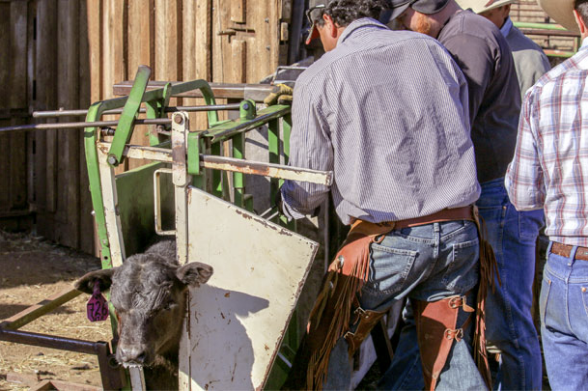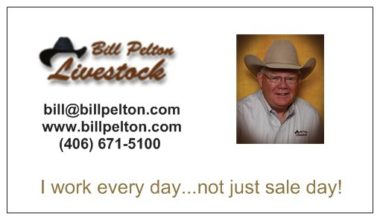Bruce Derksen for Progressive Cattleman Published on 15 May 2019
With calving coming to a close for most producers, it is time to organize an efficient and safe branding and processing day before the cow-calf pairs are sent to pasture.
In today’s interconnected society, it is more important than ever to practice proper animal husbandry, not only in the public eye, but as a staple of ranch and feedlot pens.
Practical considerations like arranging the proper supplies, manpower and work strategies are essential, but beyond making sure the facilities are repaired and ready for the day – plus purchasing the required vaccines, syringes, needles, branding, castrating and dehorning supplies – there are general behavioral principles to remember when it comes to cattle.
Even though most of the processing day will be spent with the calves, good cattle-handling principles still apply. Cattle find routine comforting and reassuring and will generally follow the leader. They seek to satisfy a handler’s guidance and will do their best to not only avoid them but move where they are asked to, so employing points of balance, proper positioning, angles, plus moving in deliberate motions for the sorting of pairs and processing of calves, is vital.
If possible, sort young calves from their mothers before the actual processing begins, as it is simpler to deal with only them, rather than having to worry about the mother’s whereabouts and intentions, plus the entire process will be more efficient. Patience combined with a good strategy and working system are the keys to completing this sort safely and productively for both animals and workers.
But be assured, no matter how calm and patient the work crew is, cattle handling is still a physical act, so practicality cannot be ignored. Low-stress cattle handling is not low-pressure cattle handling. Pressure is needed to create movement, but it is important to know when to release it.
Ron Gill, program leader for the Texas AgriLife Extension Service says, “Just getting them to move and do what you want them to do, that’s stockmanship. But when I take stockmanship to the next level and use that to actually manage the psychology and well-being of an animal, that’s low-stress handling. Use the right pressure at the right time, and make sure they have a place to go.”
When processing cows and calves, do your best to work off the front of the animals and avoid pushing from behind. Keep flight zones and points of balance in mind in all their movements, as their route can be thought of as a series of choices where they need to believe they are making the one they desire. When they arrive at a point of decision, stress rises, but when they are offered a preferred choice, stress drops.
For the initial sort, a workable process is to bring cows and calves together in a large pen and then allow the cows to leave through the entry point. If a double gate system is available, fashion the gate for the calf pen with removable bars on the bottom. Position the handler so the cows will move past and out the entry gate, and the calves will duck under their gate to make their “escape.” If using riders to sort the pairs, a shallow rectangular pen works well with two rotating riders. Station one near the gate while the other collects and pushes a calf toward the opening. The first rider can reposition to funnel the animal out the gate and be closer to the herd to gather the next calf.
If using the rope and drag method for the actual processing of the calves, make sure that when they are released, they have direct access back to their mothers. If possible, consider setting up the pens and processing area in the existing pasture to make the pairs feel more at ease with their surroundings. Select a grassy area for sliding the calves, and remove any rocks that may cause injury. Keep the drag short and in a straight line, ensuring the ropers catch both back legs, never only one. Calves can also be headed and walked toward the handlers if fences and pen positioning allow.
When cattle, young or old, are forced to interact with human handlers, they will display their own emotional states, and any and all interactions will affect their stress levels and health status. A good first experience with limited stress and no fear is important for calves as they will remember both positive and negative situations. To avoid the literal rodeo and stampede that can often appear in tandem, cattle handlers must be willing to learn from their own experience and the knowledge of others, but also have enough cattle empathy to put this information to good use. If calf processing day can be completed calmly and efficiently, health and productivity will not be hampered going forward, and proper animal welfare and husbandry will be practiced. ![]()
Bruce Derksen is a freelance writer based in Lacombe, Alberta, Canada.
PHOTO: When cattle must interact with human handlers, any and all interactions will affect their stress levels and health status. Photo by David Cooper.











